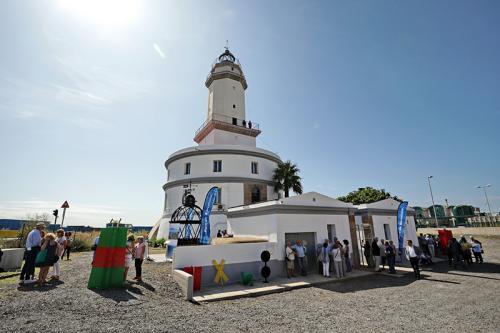The Llobregat lighthouse is located on the left bank of the Llobregat River, to the north of the river mouth. It consists of a cylindrical building and a two-part tower; the lower section is quadrangular, while the upper section is octagonal. It features a glass dome that allows light to shine both out to sea and into the sky, assisting in the navigation and geopositioning of aircraft.
The lighthouse was first lit on 1 January 1852 to guide the ships arriving at the Port of Barcelona. It was used as a model for many of the lighthouses built in the first phase of Spain's coastal lighting programme and is also the oldest contemporary lighthouse still in operation on Barcelona’s coastline. Despite the ever-present threat of closure, whether for environmental or administrative reasons, it has remained fully operational since it was commissioned.
The lighthouse is located one metre above sea level in the Llobregat delta, an area that once consisted of marshland and crop fields. Initially, it was 300 metres from the shoreline, but by 1954, the sea had transformed it into an isthmus, putting its structure at risk due to the erosive retreat of the coastline caused by successive expansions of the Port of Barcelona. Another significant threat to the lighthouse's future arose from a Royal Order in 1903, which proposed its demolition to make way for a new lighthouse to be built on Montjuïc. However, opposition from Barcelona's maritime officials ultimately prevented this plan from being carried out in 1928.
This lighthouse serves as a crucial point of reference for vessels approaching the port, as it marks the sandy shallows at the mouth of the Llobregat River. Until the recent expansion of the port, it was protected by a breakwater designed to shelter the coastline. Although it now stands within the port's boundaries, the length of its beam means that it continues to be used for navigation at sea.
In 1969, a radio beacon was installed and later replaced in 2001 by a differential GPS station. This station has a range of 100 miles and is capable of correcting inaccurate positions arising from standard GPS technology. Its beam has a range of 21 miles.
Video


